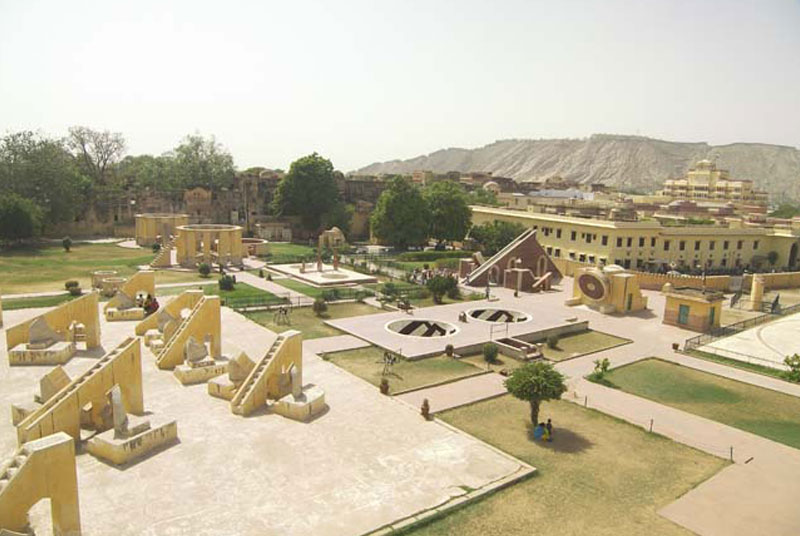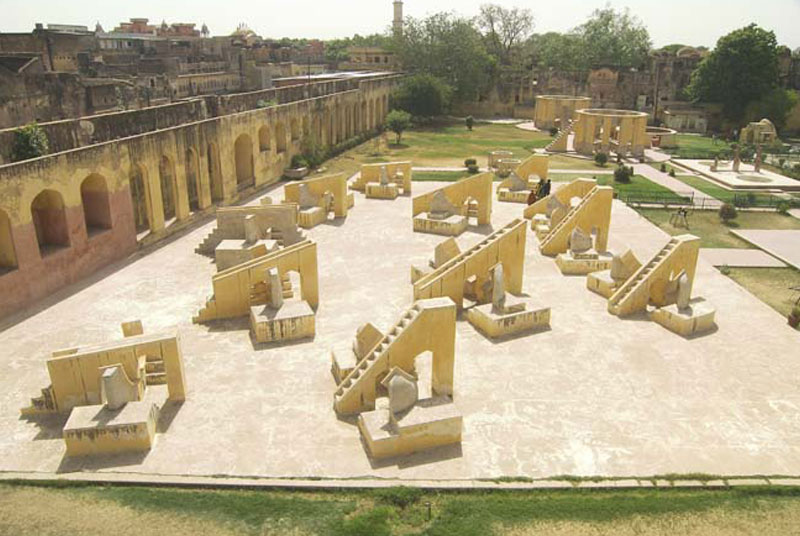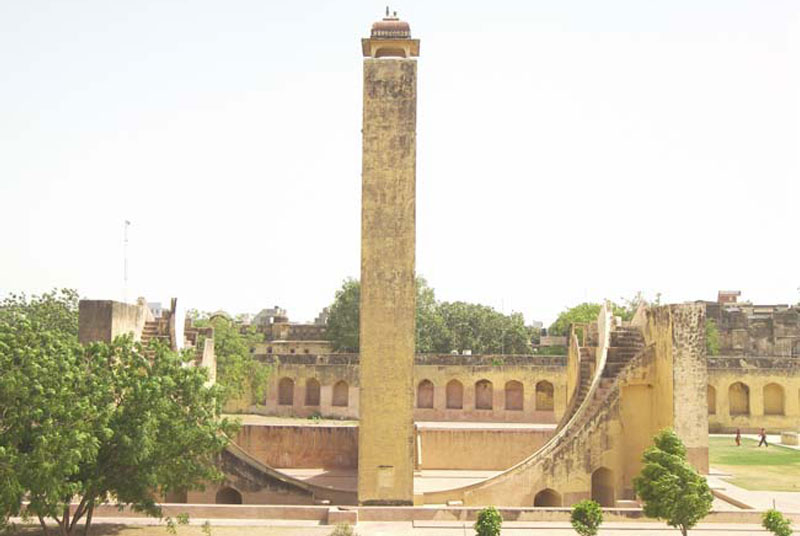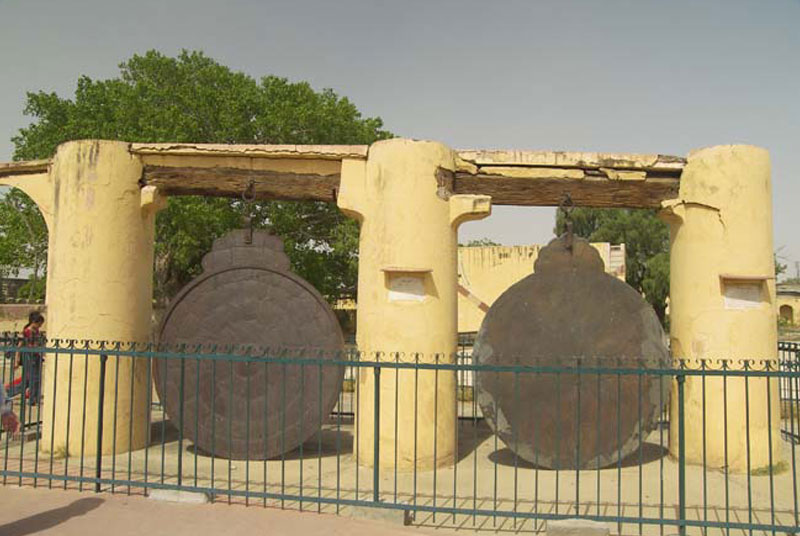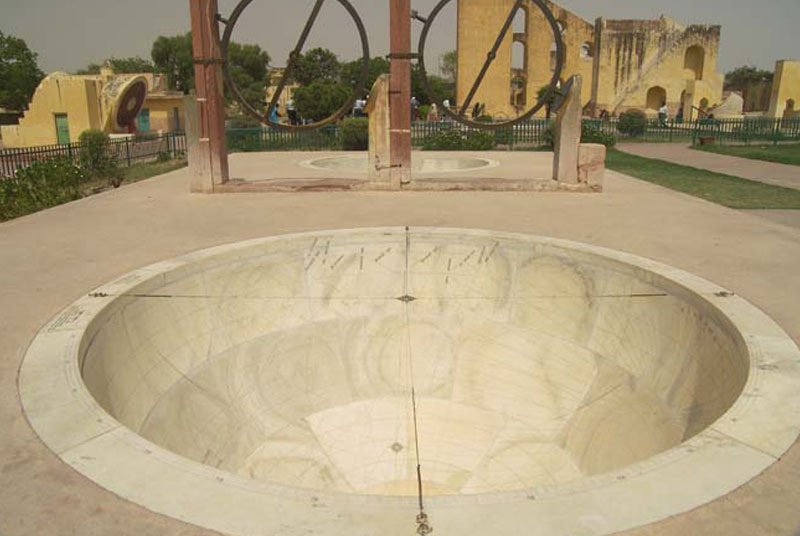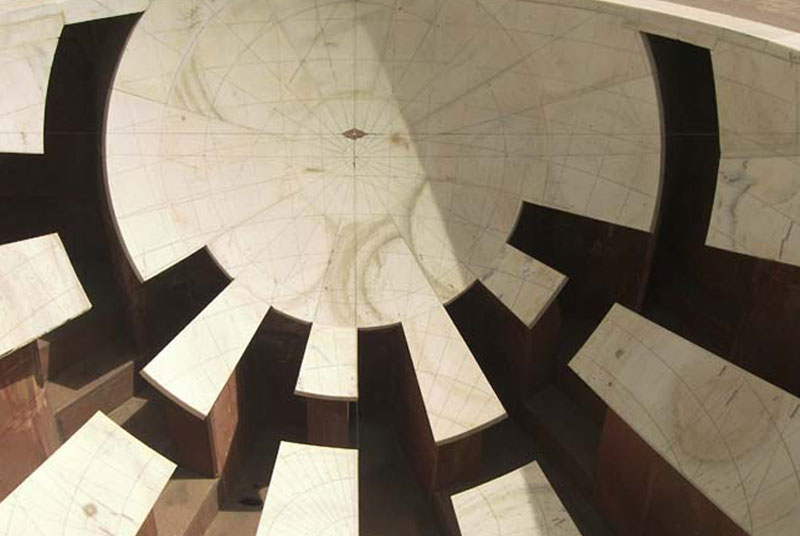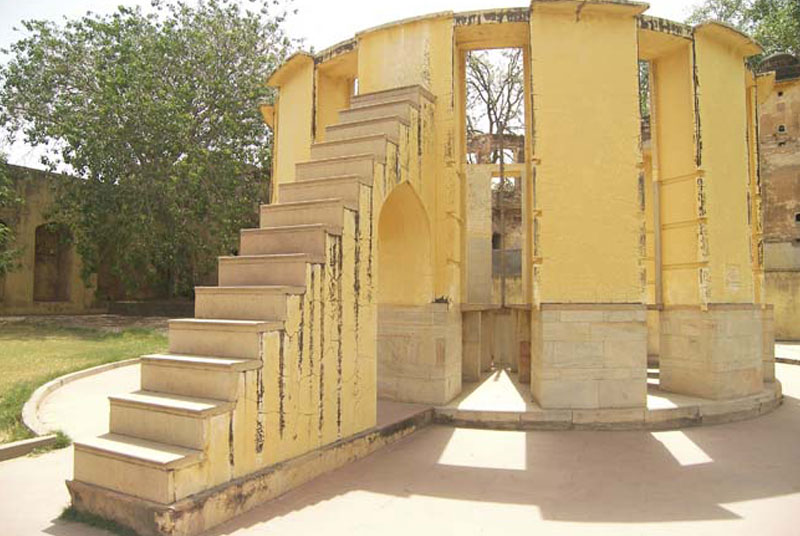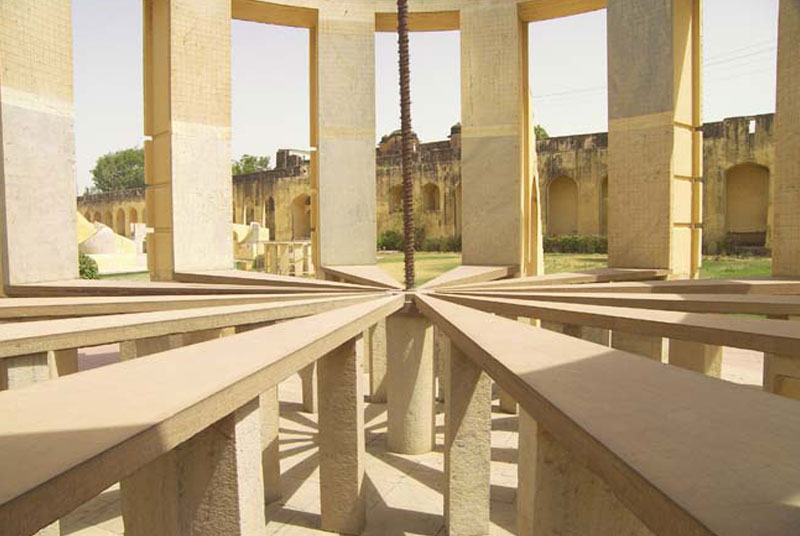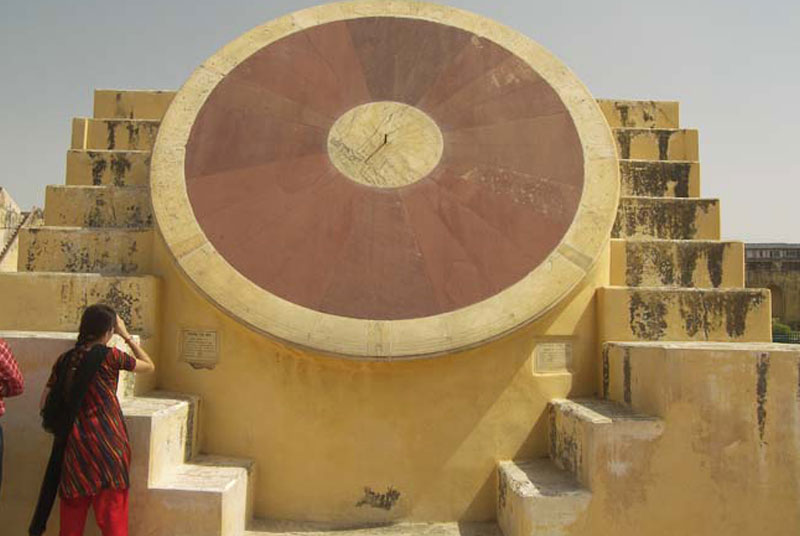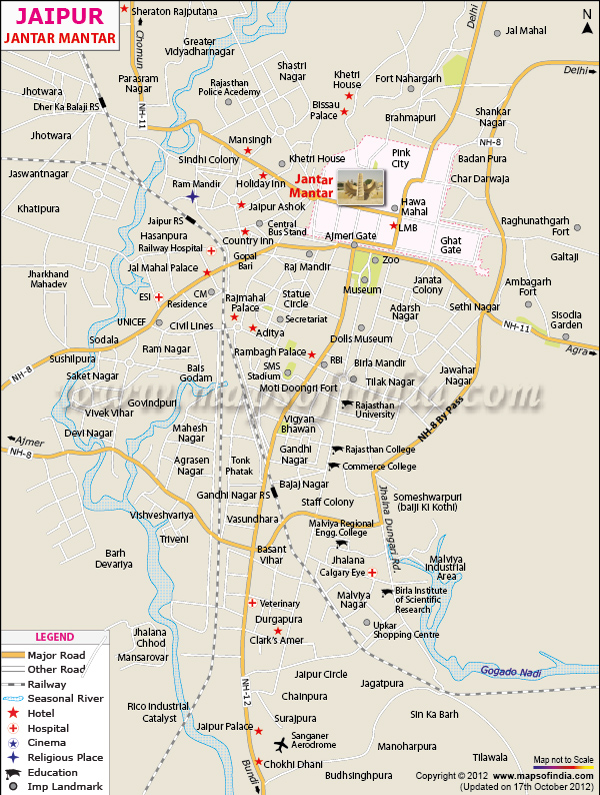About Jantar Mantar
The Jantar Mantar in Jaipur is the largest and one of the best preserved of five observatories constructed by Maharaja Sawai Jai Singh all over northern India. For being a reputed astronomer, Jai Singh was commissioned by Emperor Muhammad Shah, to correct the astronomical tables and to confirm the data that was available on the planetary positions. He took nearly seven years to finish the Jantar Mantar. It was restored in 1901 and in 1948 the famous observatory was declared a national monument. The Jantar Mantar in the Pink City consists of multiple structures of stone masonry built in varied and large geometric forms that have caught the attention of artists, architects and art historiographers throughout the world.
The colossal Samrat Jantar is the sun dial that is 90 feet high and its shadow is carefully contrived to tell the time of a day. The small domed cupola (chhatri) at the top is used for predicting eclipses and the coming of monsoons.
Till date, the instruments of Jantar Mantar are used for forecasting weather, the duration of seasons, the intensity of the monsoon, and the prospects of flood or famine. The Jantar Mantar stands as a testimony to the wisdom of the former epoch and awaits the visit of every tourist.
Location
The Jantar Mantar, the observatory in Jaipur is located near the gate of the illustrious City Palace of Jaipur in Rajasthan.
Best Time to Visit
The best time visit Jaipur is in between October and March. If you plan your trip in the other months, you will either experience unbearable heat as the temperature rises to 45 degree celsius and even more, or you will come across the rains. Therefore, if you want to experience not only the attractions of Jaipur and also the great pleasant weather, then book your tickets in any month between October and March.
e>
Last Updated on : November 13, 2025
|
|

